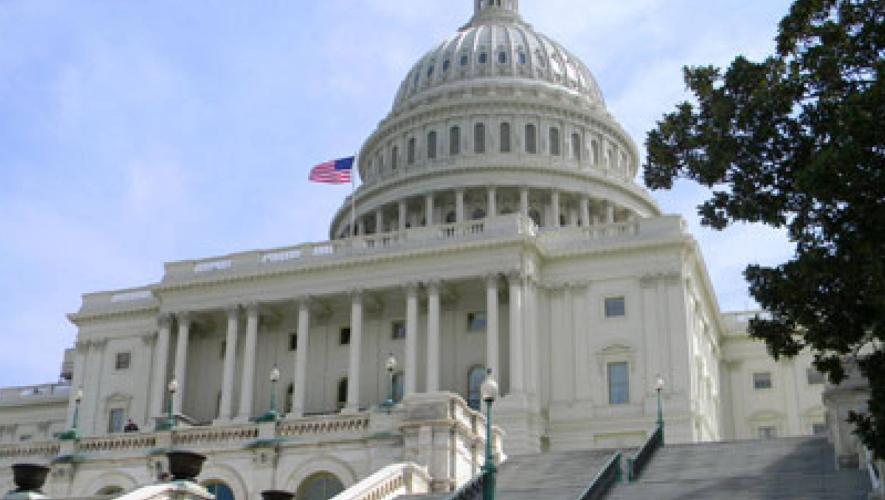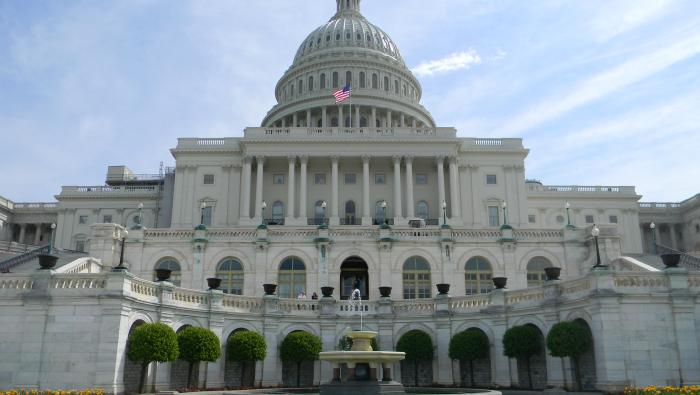FAA Administrator Marion Blakey continued her pitch for a new revenue stream for her agency during a speech at the U.S. Chamber of Commerce early last month, comparing a Gulfstream IV flying from Teterboro Airport (TEB) to the Tampa, Fla. area to an airliner operating between New York La Guardia Airport and Miami. The FAA’s own N1–in which the Administrator often travels–is a GIV.
Through ticket taxes paid by airline passengers, flight segment taxes (also paid by passengers) and a 4.3-cents-per-gallon fuel tax paid by the air carrier, the Airport and Airway Trust Fund would be enriched by $2,015 for La Guardia to Miami.
The Gulfstream’s trip from TEB to Tampa would put $236 in fuel taxes in the trust fund. “This disparity will have an even greater impact as we move forward,” Blakey said, “because we expect GA jets will be the fastest-growing segment of aviation.”
Under the FAA’s new reauthorization proposal, the commercial flight would pay 36 percent less in user fees and fuel taxes than under the current system, she said. “And that’s because commercial users are already overcharged.” Under the same proposal, the GIV would pay $837, mostly through considerably higher fuel taxes.
“If a $500 rise in fuel taxes seems a lot, contrast that with a few of the other costs of owning and operating a GIV,” Blakey pointed out. “For starters, there’s the 500 gallons of fuel burn an hour. If you are shelling out $5 per gallon, that’s $2,500 right there. Throw in parts, labor, maintenance and landing fees, and you’re looking at at least $3,000 an hour, maybe more.” She added that if the GIV lands at a non-hub airport–St. Petersburg-Clearwater International, for example–it would pay only fuel taxes, and no user fees.
“Suppose you don’t have a GIV sitting around at your disposal,” Blakey continued. “Let’s say you like to tool around in a Bonanza 36. You’re leaving Palwaukee Municipal in Chicago, headed to Kansas City Downtown Airport. Again, not a dime in user fees. Not one penny.”
Blakey maintained that the airlines currently pay 97 percent of the trust fund revenues while they drive 73 percent of the costs. GA, on the other hand, drives 16 percent of the FAA’s costs, she argued, but contributes 3 percent of the revenues.
According to the FAA Administrator, the new plan does not ask general aviation to pay its full share. Although GA users impose 16 percent of costs, she claimed, they are being asked to pay 11 percent, with the rest coming from the general fund.
Plan Meets Strong Opposition
Jack Pelton, chairman, president and CEO of Cessna, countered that the FAA is proposing to collect user fees, which it concedes will generate less revenue than it currently receives and result in an unstable funding stream dependent on continued growth of the system.
“Simply put, the FAA wants to dismantle the current funding mechanism, increase the tax on jet fuel by 220 percent and on aviation gas by 261 percent, and incorporate a range of new user fees for general aviation,” he told those at the chamber’s 2007 aviation forum in Washington.
Pelton said that proponents of user fees say the mechanisms for funding the FAA are not working and that a funding overhaul is needed to pay for modernization and to cover revenue shortfalls from the declining commercial ticket tax. “They want to privatize the FAA and remove it from congressional oversight,” he said.
An evaluation of the current funding system shows little need for new revenue streams, he said, adding that funding for the FAA has increased–not decreased–in the past decade.
The logical approach for FAA reauthorization, Pelton said, would be continued investment in the national air transportation system with a higher contribution to the FAA from the general fund; modernization with satellite and other technologies to increase efficiency; keeping the current revenue structure, including GA fuel taxes; rejection of user fees for general aviation; and ensuring continuing congressional authority.
A former chairman of the General Aviation Manufacturers Association, Pelton also took issue with the FAA’s claim that the very light jets coming to market–such as his company’s Citation Mustang–will place a new burden on the air transportation system.
“The argument that the new, very light jets will take off and overwhelm the nation’s air traffic system is completely unrealistic,” he said. “Even if the most optimistic predictions about VLJs turn out to be true, we will not see large numbers entering the system over the next five years. That means we have time to see how this market truly develops.”
Meanwhile, Congress has been holding a series of hearings on the Bush Administration’s plan to overhaul the FAA funding mechanism. The plan has received a less than enthusiastic reception on Capitol Hill and almost universal rejection from general aviation interests. At the chamber of commerce aviation forum last month, a panel of professional staff members from congressional aviation committees said that work has begun on lawmakers’ own counterproposals to fund the agency.
Chris Bertram, a professional staff member with the Senate aviation subcommittee, said that unlike the FAA reauthorization bill that was passed in 2000, which achieved across-the-board support from the aviation community, “We see a lot more fighting among the various factions” over the latest White House proposal. But he vowed, “We will get this done this year.”
The issue of user fees for aviation has arisen because all of the taxes that go into the aviation trust fund are set to expire on September 30. The Air Transport Association, which represents the airlines, has seized on this “reauthorization” window as an opportunity to change the way the FAA is funded.
Under the Bush Administration plan, most of the FAA’s revenue would come from new cost-based user fees, along with new certification and registration fees. For general aviation interests, the most unpalatable part of the proposal is the increase in fuel taxes, although on another panel NBAA president and CEO Ed Bolen acknowledged, “We may have to pay a little bit more.”
Jim Coon, Republican chief of staff on the House Transportation and Infrastructure Committee, told attendees, “My gut instinct is that propeller aircraft will probably stick with a fuel tax. I can’t say what will happen with commercial aircraft and business aircraft.” Added Bertram, “I think we are cognizant that small GA aircraft use the system differently from a large corporate flight department with a business jet.”
According to Gael Sullivan, a senior professional staffer on the Senate aviation subcommittee, the legislators want to get a bill through the Senate before Congress goes on hiatus in early August.
Blakey asserts that without the funding provided by the Administration’s “Next Generation Financing Reform Act of 2007,” there will be no next-generation air transportation system (generally known as NextGen) in time to prevent gridlock in the skies.
The Administrator has also said that NextGen is expected to cost between $15 billion and $22 billion by 2025, and that is just for infrastructure. But Coon warned, “You can probably put a multiple of two on that, and that is probably how it is going to end.” And that does not include the cost of equipage, which will be borne by operators.
Airspace Technology
While the FAA funding mechanism featured prominently in the discussion, it was not the only topic at the annual Chamber of Commerce aviation forum. Monte Belger, v-p for transportation systems solutions for Lockheed Martin, called on the FAA to restart the controller-pilot datalink system tested briefly several years ago at Miami center. The program ended when the FAA ran out of money.
“Let’s make some investment decisions today that will create the system that we need,” said Belger, who worked for 30 years at the FAA. “The cost of equipage is huge, not only for the airlines, but also for general aviation and military aircraft. That is not to say it will be easy, but a lot of the technology is proven.”






